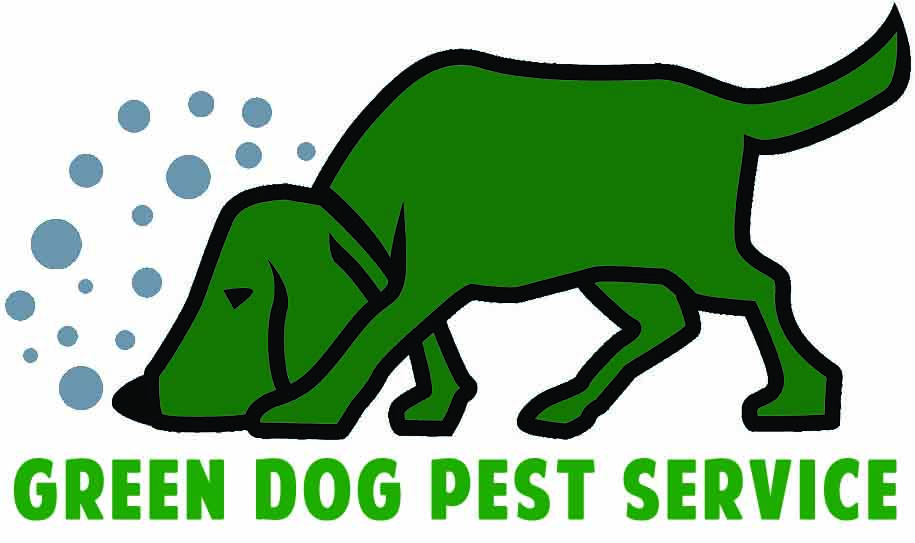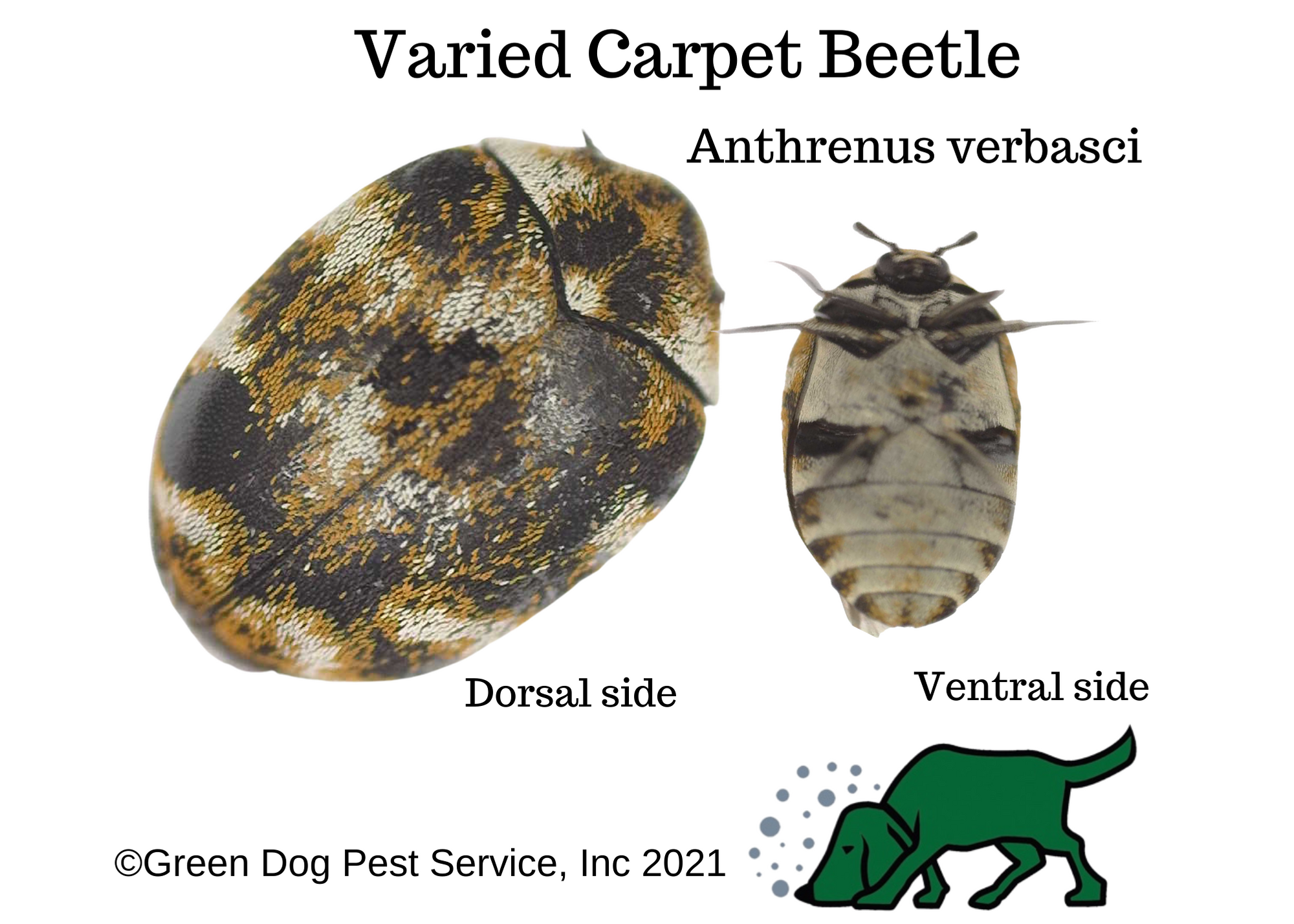Although we don’t train our dogs to find them, the Varied Carpet Beetle (Anthrenus verbasci), from the Dermestidae family, is probably the number one insect we come across that is misidentified as bed bugs. Their populations can live in homes, under floors, within walls, in couches, box springs, on rugs, etc.. They feed mostly on animal byproducts such as wool, feathers, dander, hair, taxidermy, dead rodents or birds. Outside of homes they will also feed on pollen and other natural animal byproducts like bird nest and wasp nest contents.
As an adult, these beetles are only about 2-3mm (1/12-1/8 inch) in size. Upon close inspection many people find Varied Carpet Beetles quite beautiful. During their larval stage they can be a public health consideration with their setae. Carpet Beetle larvae are a bit fuzzy looking. The fuzzy appearance is from urticating hairs, which can break off if you touch them with bare skin, and can cause some itching and irritation. You may inadvertently come into contact with these hairs and your skin reaction may look like an insect bites.
Varied Carpet Beetles have a very long larval life stage, ranging from 222-323 days depending on temperature, humidity and access to food. They don’t live long as adults, on average 2-6 weeks.
To rid your home of carpet beetles requires attention to detail. Finding their food source is the first step to controlling the issue. Stored food products that they have access to should be thrown away and any new product should be sealed up tight so that they can’t access it. Vacuuming is a great second step as it not only can remove the beetles it also removes their food sources like hair or dander.
If you have a very large population that you can’t get a handle on, call a pest management professional for a thorough inspection and ask about treatment options.


